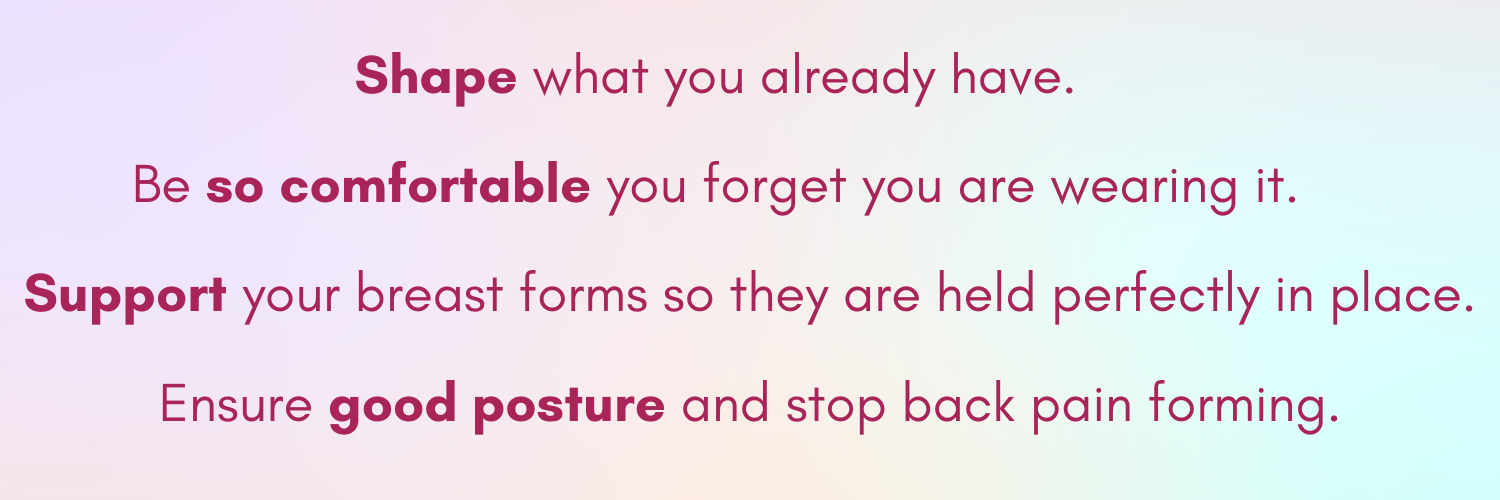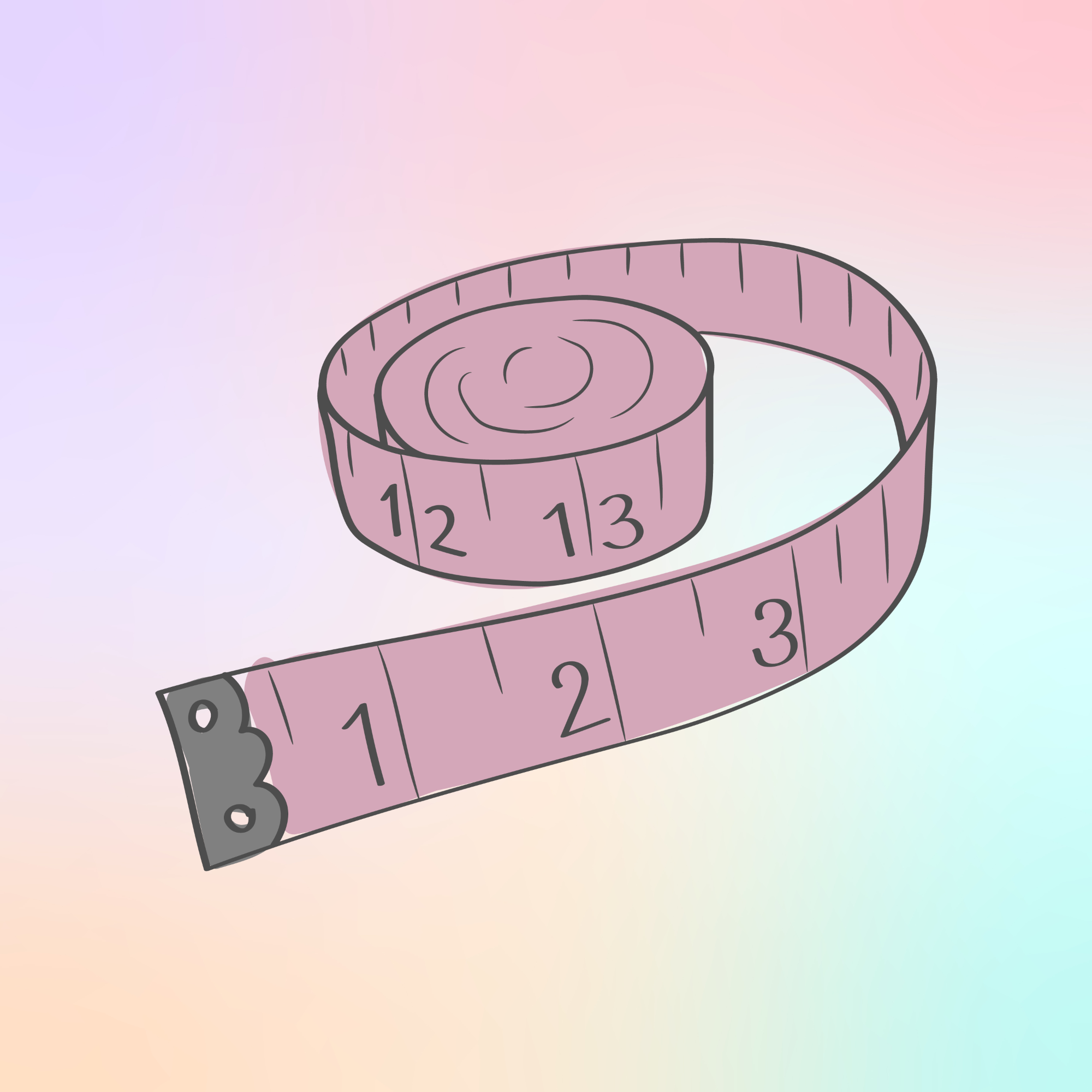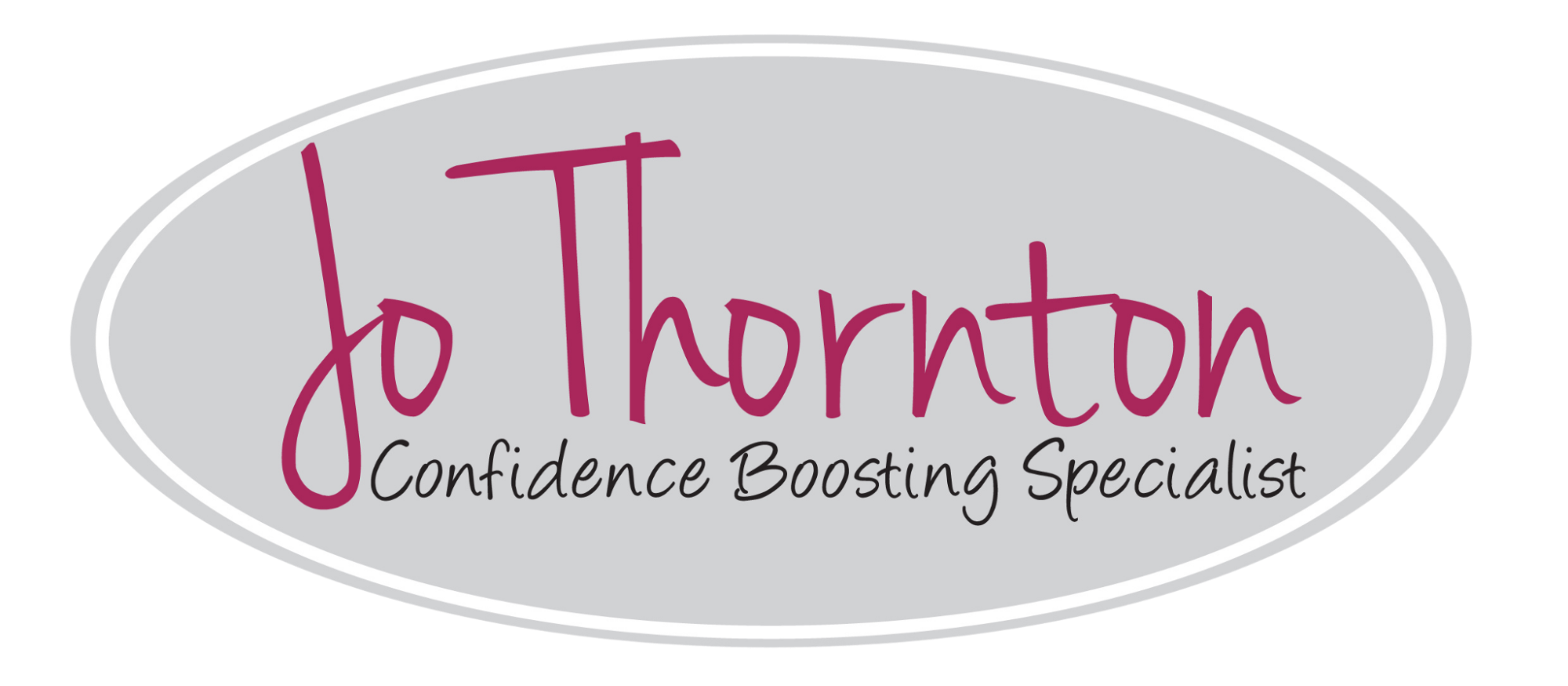Trans Bra Fitting - Shape, Sculpt and Support
If you are new to the trans world, or a seasoned dresser, it's always good to check on your bra fit and sizing to make sure that they are correct.
I would hazard a guess that a huge percentage of people around the world are wearing the wrong bra size. We want to ensure you know how to measure yourself, choose the right bra and check the fit, so that everytime you buy a new bra you can be sure it's the right one for you.


The most important ingredient is knowing your band size. This is the measurement around the body, where the bra band sits, represented in inches.
If you don't have a soft tape measure you will need one, or you can tape some paper strips together to mark and then measure.
Here is the correct method:
Step 1: Get yourself a nice soft tape measure with inches on. People tend to keep these with sewing equipment, and they can be bought on the ends of aisles in supermarkets, as well as online and sewing stores.
Step 2. Underbust/band size measurement - run a tape measure horizontally around your body, approximately 4 ribs up from the bottom, and take a measurement in inches. Make sure the tape measure is snug and relax your arms as far as possible. This measurement will be your guide for bra band fitting. Bras come in even numbers, such as 36", 38", 40" etc. If the measurement is an odd number, try the two sizes around it when trying on bras. For example, if you measured 39", start trying on bras in a 38" and 40" size. If it was an even number, use that to start and see how the fit is. Remember that every bra is different and styles of bra will affect things too.
(NOTE: Some bra fitting guides and calculators will tell you to add four or five inches to your underbust measurement, but this is outdated advice. The "add four" method was popularised by Warners in the 1930s when bra design was in its infancy - it simply doesn't work well with modern bras.)
Step 3: For cup sizing, you have the ability to choose, which is the wonderful aspect of trans dressing. This can be tailored and changed to your needs and environment. Some customers like subtle, some mid-size and some bigger. Many customers like a few looks, with a very subtle one for public and fuller forms for home. Some trans customers are starting to transition with hormone therapy, so natural growth can be considered.
The choice is yours, and can be changed as you wish.
Since everyone's chest is different, it's worth considering that too. If you have some natural breast of your own then you will need a smaller breast form in order to achieve say a C cup than someone who is very flat. You might also choose to accentuate it with a breast enhancer, rather than covering it up with a full breast form.
Step 4: When trying on bras, put the bra on around your body first doing it up on the LOOSEST SETTING. The elastic in the bra will loosen with age, so you'll want to be able to tighten it through it's life and maximise its lifespan. If you will not be using breast enhancers or breast forms, adjust your breast into postion. Tighten the shoulder straps so that they do not dig in and hurt, or slip off the shoulder easily. The band around the body should be taking the main weight of the breasts, and you should feel the shoulder straps pull up a little to help support and shape.
Step 5: Checking and being honest time. This is SO important as not every bra fits the same way. Each brand is different and you may find that your size varies with different brands and types of bra. Does the bra feel tight around the body? If so, good! It may feel too tight, but this can simply be if you are not used to it or used to wearing a bra too big for you, so be honest with yourself about it and give yourself time. We don't want it to be too tight, but don't be afraid of it being quite tight. The more weight you are adding to the bra with breast forms, the more important it is that it fits well to hold the weight. The main principle is that it should feel tight, but not dig in. You shouldn't find you have lots of flesh bulging over the top, but some is normal. Sometimes this is down to the bra, and I'd always recommend getting a bra with a wider band around the body to hold well and be more comfortable. If you are prone to bulging, but feel the band measurement is the correct size for you, this change to bras with wider/better quality bands can be key to a comfortable fit.
How Should It Fit?
If the band fits you well, you should be able to get 2 fingers side by side in between the bra and your skin, and it should have a little bit of give.
Check that at your side, using your opposite hand. If using breast forms/breast enhancers, check that the weight of the breasts is well supported so the shoulder straps are not digging in at the top. Your mantra should be "comfortable support".
It can take a while to find the right bra for you, but it's really worth the effort. Try different brands and different shapes and enjoy the process along the way.
Now for some final checks of key areas, to be sure it is the bra for you:
With the bra on, check these to be sure of a great fit and hold:
- Does the bra band run straight around your body? It must not be pulled up at the back.
- Are the bra straps sitting straight on your shoulders?
- Does the underwire or cups follow a natural shape, so not too wide or too narrow?
- It should start sitting flat against your ribcage and follow round, hugging your body and tracing the line of your breasts. Your breasts should be fully held and supported.
- Lift your arms up to check the band/underwire is holding all your breast in, and that it's sitting flat, especially between the breasts.
- The cup should not end before your breast form does at the side, which should fall under your arms.
- If the bra is pulling away at the front you can try a tighter band size to pull it in. If you try a smaller band size, so say a 38" rather than a 40", the equivalent cup size will be one cup size bigger in the smaller band size. This is because the cup has become narrower, but the volume of the breast is the same. There needs to be extra space added to the cup to make up for it and hold the breast/breast form. So, the physical volume of a 38D is the same as a 40C. A 40C breast just tends to be wider a little flatter, whereas as 38D is slightly narrower, but a little fuller. When changing band sizes, the cup size will usually need altering, unless your breasts have altered in physical size.
- If your bra is pulling away at the front, and you find that the smaller band size is too tight for you, try the original band size with a larger cup size. So, if you were a 40C and you tried a 38D and it was too tight, next try a 40D bra to see if you can get it to sit better. These sorts of tweaks can really help when trying on different brands.
- Does the cup sit flush at the front, at the top of the breast? Lace bras are the worst for this, but if you find the bra gapes, try a smaller cup size.
- Do you have double breasts or humps at the top of your breasts above your bra? If so move up a cup size, or maybe 2.
- Do you have deep indentations in the shoulders? If so, loosen the straps a little or try bras with wider straps.
- Does the bra band ride up - if so and the shoulder straps are not too tight, try a tighter band size.
- Is the underwire digging into your breasts? Try a different bra to begin with and if it still happens, try larger band size.
If you've followed the guide to accurately measuring your bra size, you should be feeling pretty amazing right now. Stand back and marvel at your new found breasts, before sauntering off to show the world! NOTE: whilst I'm a huge advocate of 'sharing is caring', indecent exposure is a thing and I accept no responsibility for your future criminal records, hehe.
If you need any advice about any of my breast enhancers, please get in touch and I will be happy to help.
Jo
